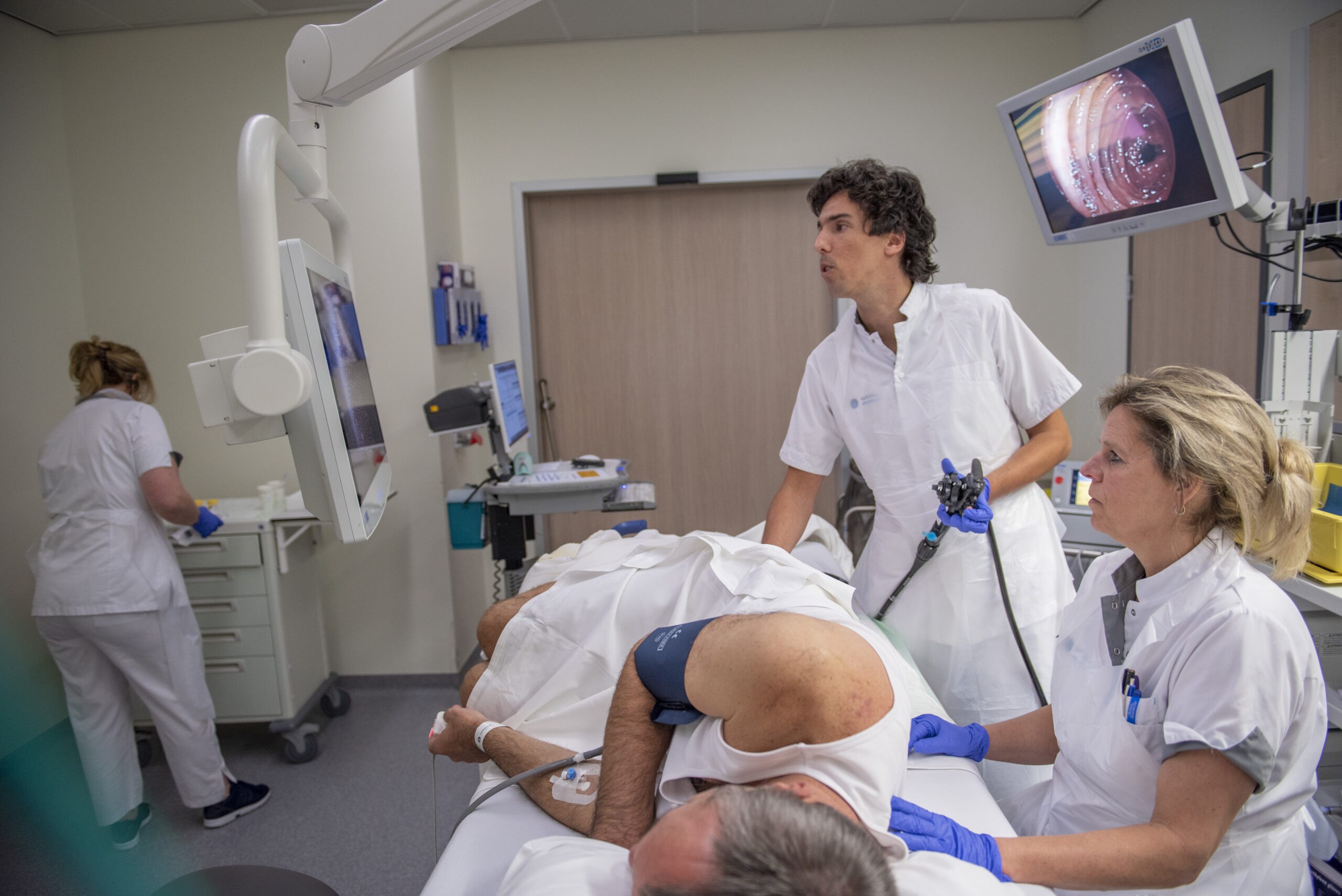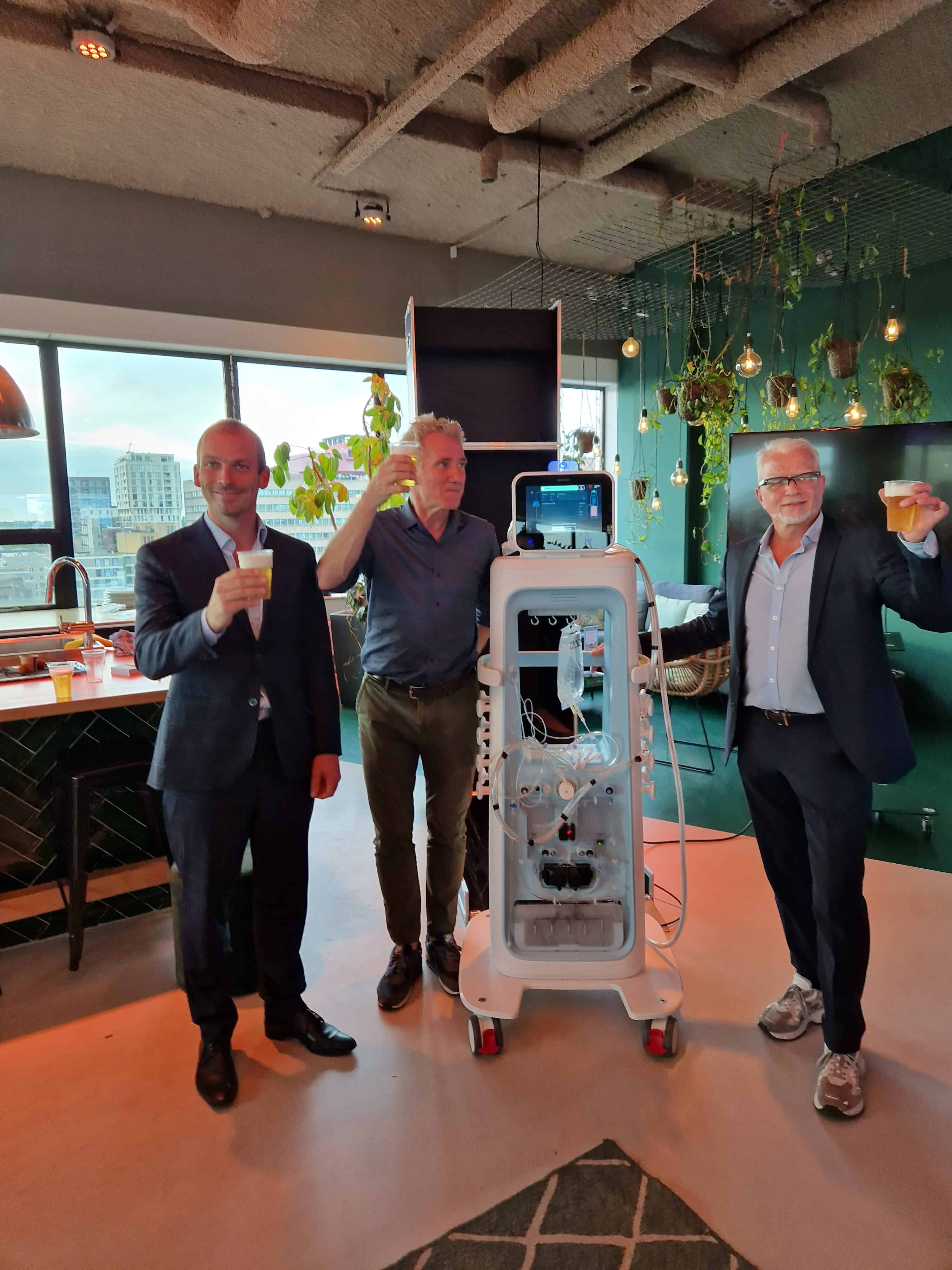
The stomach, intestine, liver (GI) physicians at Catharina Hospital have been able to prevent 150 major bowel cancer surgeries over the past three years. The specialists are using two innovative techniques to remove intestinal tumours through the anus using a flexible tube (colonoscope). This makes Catharina Hospital one of the few non-academic hospitals in the Netherlands that performs both of these types of endoscopic treatment, according to a press release from Catharina Hospital.
Since the introduction of the national cancer screening in 2014, bowel cancer is being diagnosed at an earlier stage. “The number of small/early stage colon tumors in the large intestine and rectum that are found has risen sharply,” says MDL physician Ramon-Michel Schreuder of Catharina Hospital. “Nowadays, we can remove these early tumors in the colon by using endoscopic techniques, so that a surgical procedure is no longer necessary for this. Patients go home the same day after an endoscopic procedure.”
Endoscopic Submucosal Dissection (ESD)
The first technique is called Endoscopic Submucosal Dissection (ESD). The intestinal tumor is peeled off the underlying muscle layer from the inside with a scalpel. Schreuder: “A major advantage is that the tumor is removed in one piece. That makes it easier for the pathologist to examine the tumor.” The size of the tumor is not important for an ESD, as long as the tumor does not grow into the muscle layer.
Endoscopic Volledige Dikdikte Resection (eFTR)
The other technique is Endoscopic Full-thickness Resection (eFTR). This technique can be used for tumors up to and including a size of two centimeters. With an eFTR, not only is the tumor removed but also the entire intestinal wall underneath it. “With a pair of forceps, we slowy pull the intestinal tumor into a ‘cap,’ which is a kind of sleeve. A clamp is then inserted under the tumor, and the tumor is cut away just above the clamp. So the hole that is formed in the intestine is already closed, before it is cut away,” Schreuder explains. “The small clip that remains in the intestine eventually lets loose of its own accord and exits through the stool. Patients don’t notice this at all.”
Organ-sparing treatment of bowel cancer
In recent years, the multidisciplinary bowel cancer team at the Catharina Cancer Institute has been focusing on organ-sparing treatment of bowel cancer. “With success,” says surgeon-oncologist Pim Burger. “What the GI physicians are working on are just two of the many techniques that Catharina Hospital is utilizing to optimally treat patients who have bowel cancer, if possible without surgery. For example, we have recently started using the Papillon treatment technique to irradiate rectal cancer tumours from the inside; only two such irradiation units exist in the Netherlands, and these enable us to avoid surgery, even in the case of larger tumours. We can offer patients all kinds of treatments, with personalized treatment for each individual patient.” Catharina Hospital is a major referral center for rectal cancer in the Netherlands.

Selected for you!
Innovation Origins is the European platform for innovation news. In addition to the many reports from our own editors in 15 European countries, we select the most important press releases from reliable sources. This way you can stay up to date on what is happening in the world of innovation. Are you or do you know an organization that should not be missing from our list of selected sources? Then report to our editorial team.






